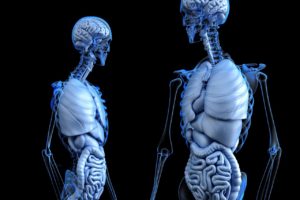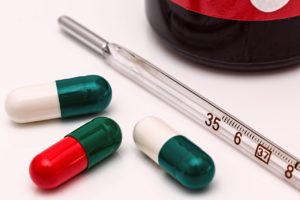Location of Important Organs

Ever have a twinge and wonder what organs or body parts are in that area? When the next step is to run a Google symptom search, you will find yourself faced with a potentially deadly diagnosis in approximately 3.2 seconds!
To avoid the unnecessary stress and anxiety of appointments with Dr. Google, help yourself make wise health decisions by knowing the approximate location of your organs.
Important Organs
Brain: It’s in your head (obviously). Interesting tidbit: your main is made of nerves but they are not sensory neurons, so your brain doesn’t feel. The other things around your brain feel, like membranes and connective tissue inside and outside the skull.
Thyroid: It is on the front of your neck right above the middle dip between your collar bones.
Heart: Ball of your fist and put it right in the middle of your chest (yes ladies, right between your boobs).
Lungs: They actually start way up high right below your collarbones and extend down and stop right about your last complete rib.
Stomach: It starts in the middle, right under your sternum (or breastbone) and curves to the left. Interesting tidbit: laying on your left side causes gastric emptying, which is when the stomach dumps its contents into the top of the small intestines.
Liver: It is shaped like a triangle on your right side, starts under your ribs. The long side of the triangle crosses over what you might call “the pit of your stomach”, the short side extends down about even with your belly button.
Gallbladder: It’s located under the liver, a little to the right of “the pit of your stomach”.
Small intestine: It snakes its way left and right across your abdominal region
Kidneys: They are towards your back, under the bottom few ribs.
Colon: It is right above your tailbone. Interesting tidbit: this is why constipation can cause back pain.
Appendix: It is on your right side, above your hip bone.
Bladder: It is right above the pubic bone (the middle bone that connects the two sides of the pelvis). I mean, we all know what it feels like to have to pee, right?
So this is a list of the major things that you can’t see but you might be able to feel if something isn’t quite right.

